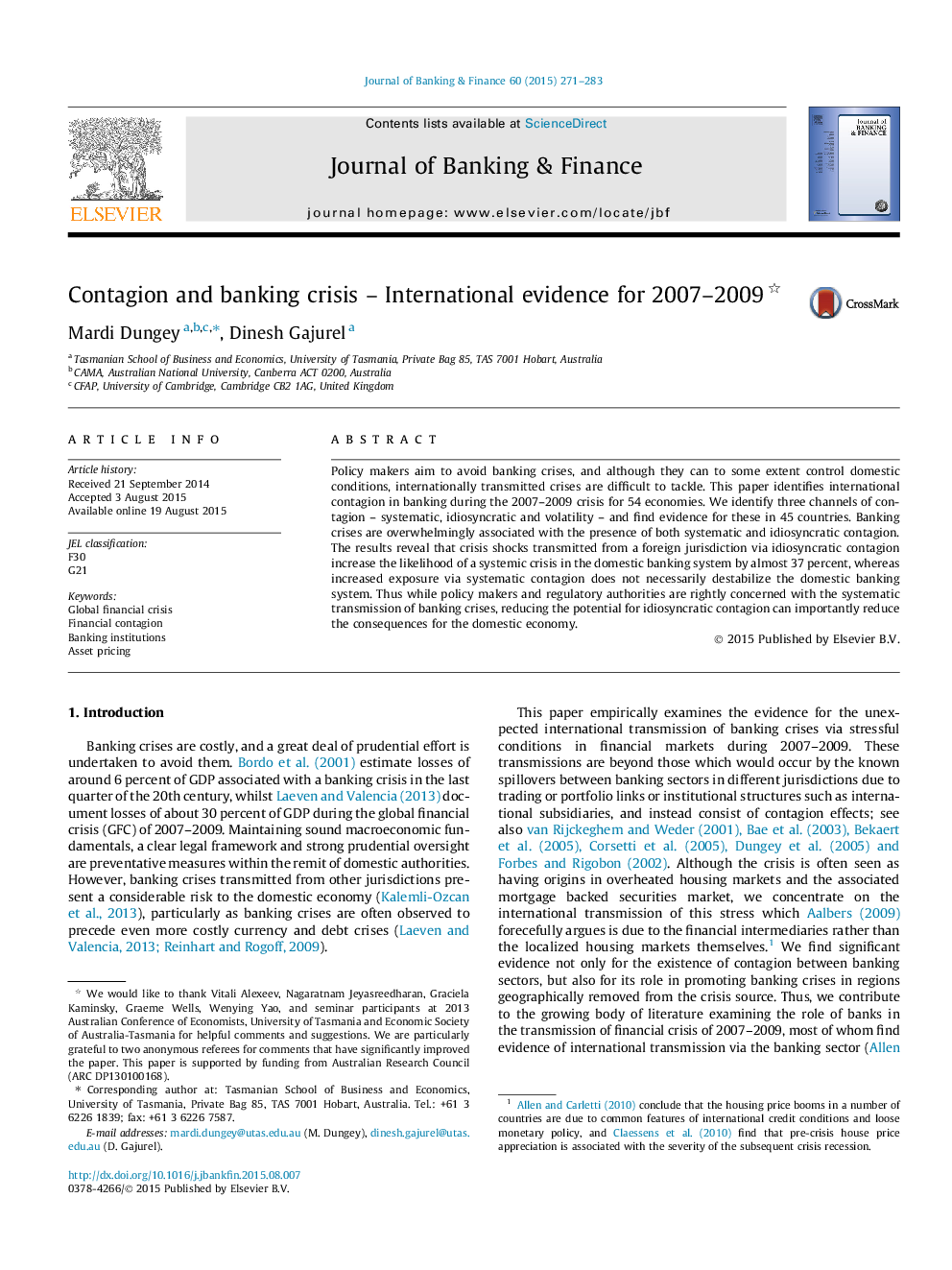| Article ID | Journal | Published Year | Pages | File Type |
|---|---|---|---|---|
| 5088377 | Journal of Banking & Finance | 2015 | 13 Pages |
Abstract
Policy makers aim to avoid banking crises, and although they can to some extent control domestic conditions, internationally transmitted crises are difficult to tackle. This paper identifies international contagion in banking during the 2007-2009 crisis for 54 economies. We identify three channels of contagion - systematic, idiosyncratic and volatility - and find evidence for these in 45 countries. Banking crises are overwhelmingly associated with the presence of both systematic and idiosyncratic contagion. The results reveal that crisis shocks transmitted from a foreign jurisdiction via idiosyncratic contagion increase the likelihood of a systemic crisis in the domestic banking system by almost 37 percent, whereas increased exposure via systematic contagion does not necessarily destabilize the domestic banking system. Thus while policy makers and regulatory authorities are rightly concerned with the systematic transmission of banking crises, reducing the potential for idiosyncratic contagion can importantly reduce the consequences for the domestic economy.
Related Topics
Social Sciences and Humanities
Economics, Econometrics and Finance
Economics and Econometrics
Authors
Mardi Dungey, Dinesh Gajurel,
